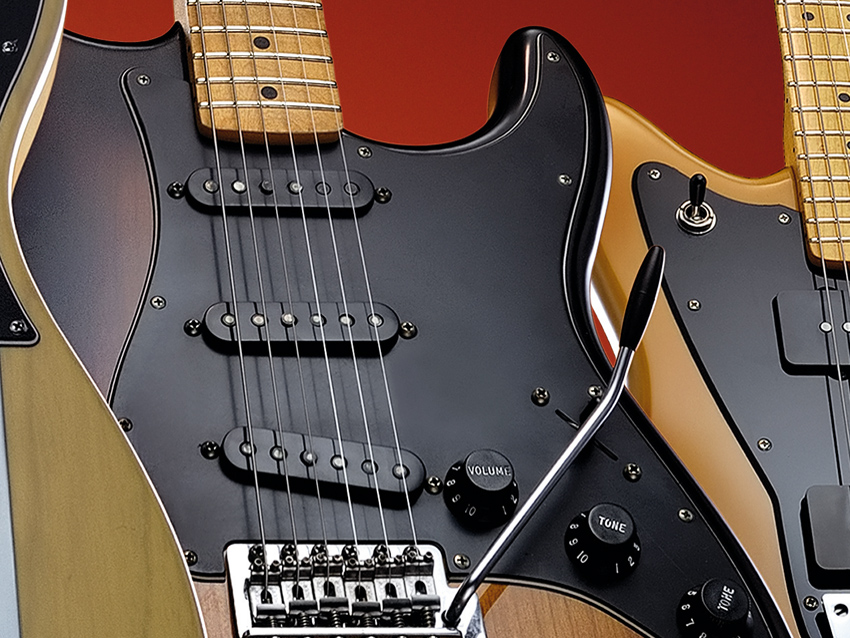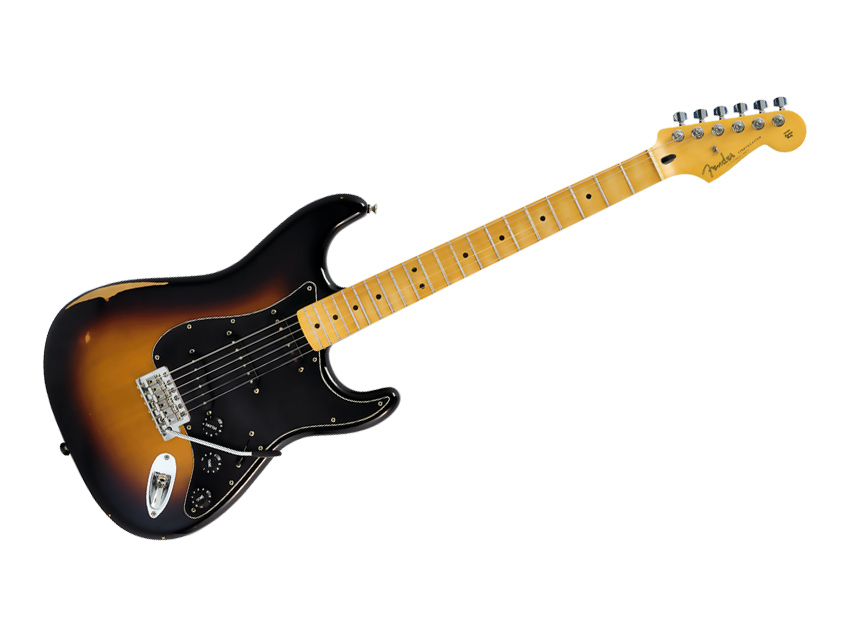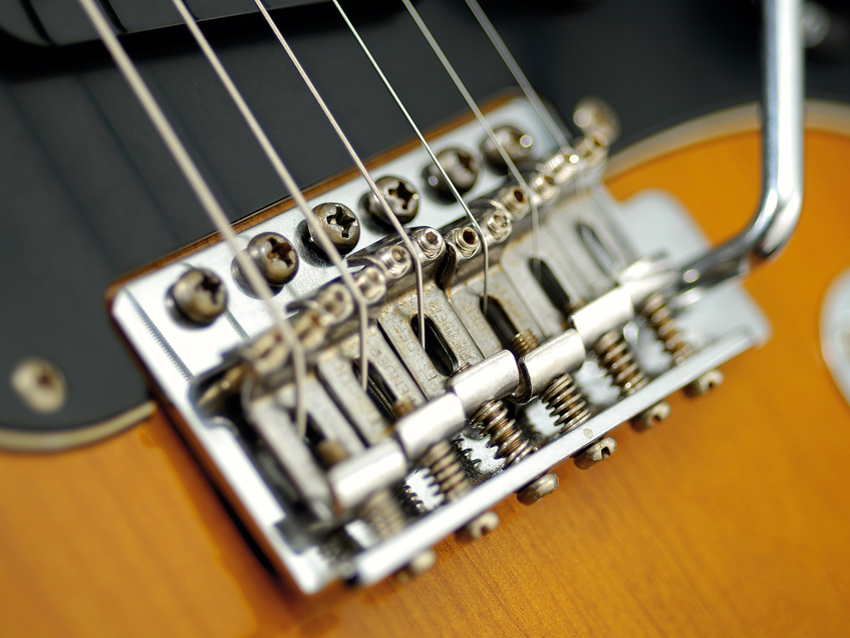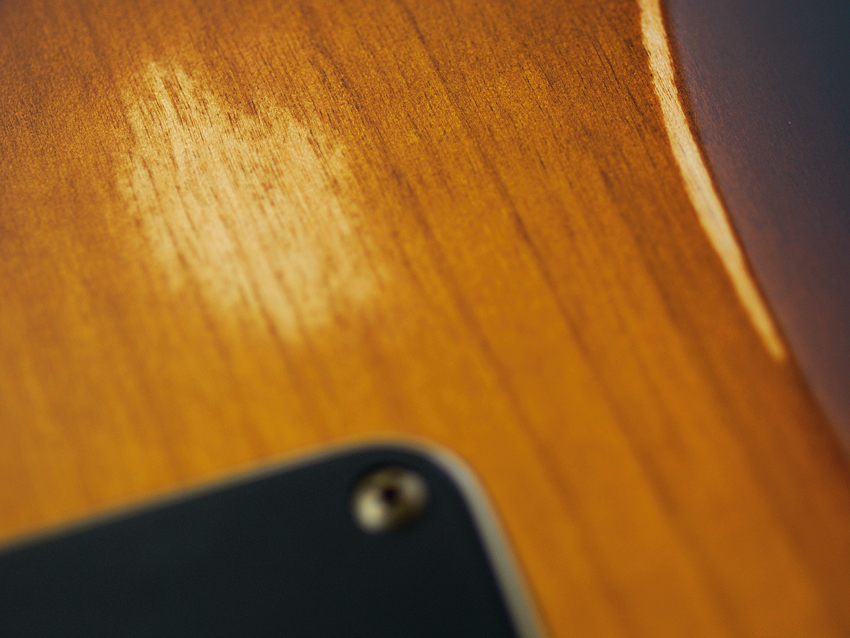MusicRadar Verdict
A rewarding mix of vintage and modern aesthetics and features. The ageing will be the decider.
Pros
- +
Pro-quality Strat tones. Lovely playability. Light weight. Played-in feel.
Cons
- -
Gigbags are average at best. Limited colour choice. No rosewood 'board SSS model.
MusicRadar's got your back

Fender Road Worn Player Stratocaster

Fender Road Worn Player Stratocaster

Fender Road Worn Player Stratocaster

Fender Road Worn Player Stratocaster

Fender Road Worn Player Stratocaster
We first looked at Fender's Mexican-made Road Worn Series back in early 2009. Like all pre-aged new guitars they were met with both joyful squeals and derisive jeers, depending entirely on whether you think beating up a brand-new guitar is either stupid or clever - as a man named St Hubbins once observed, it's such a fine line.
In fact, it's neither. It's Fender continuing what it does best, and that's offering its most popular guitars in every possible price and spec format, hence our latest example.
"There's no doubt the lack of finish on the fingerboard keeps this guitar from being brittle-bright."
The three-single-coil Stratocaster should be familiar to all but the newest of intergalactic visitors, given this design's mainstream prevalence since the mid-1950s.
It begins with a two-piece alder body that's deeply and lovingly contoured; not blocky like certain later guitars can be.
When it comes to see-though finishes, Fender needs to be a little more careful with its wood selection from an aesthetic point of view, so you'll pay an extra £36 over the solid colour option (Olympic white is what's offered).
On this example there's a lot of black into the upper horn, which gives a more '70s rather than '50s vibe, exacerbated of course by the convincingly pre- worn black plastics.
The guitar remains mercifully light at 3.3kg. We criticised previous Road Worns for being on the heavy side, so if they're all like this, hooray.
The Road Worn finish is the major talking point, a thin, almost-matte nitrocellulose coat that's been mechanically aged to simulate a few years' heavy use.
It's not convincing in a vintage guitar sense, but Fender is the first to point out that nobody is trying to fool you that these are old guitars; they just ape the feel of well-played instruments and, yes, look a bit vintage from afar.
The lightly worn satin finish of the neck is very similar to the existing Road Worns; inviting, quick under the palm and so much more playable than new nitrocellulose.
The medium jumbo frets and a 241mm (9.5-inch) radius however, gives you the option of a lower action, enabling easier string bending with less fret buzz and choking.
The difference isn't night-and-day perceptible from a 184mm (7.25-inch) radius and skinny frets (Road Worns have bigger-than-vintage Dunlop 6105s it should be noted), but play for a few minutes and you'll soon get the idea. We'd take this over a vintage-correct fingerboard every day of the week.
And as is common for modern-day Fenders - particularly if you buy from a good dealer - set-up, playability, and all that essential 'it-feels-great' stuff is of a high standard.
Being ultra picky, we might just take the fret ends down a little bit on the underside of the neck, to sit more comfortably with the lightly rolled fingerboard edges. But they're by no means sharp, just for the record.
In terms of hardware, the Strat has a mid-range Synchronised Tremolo with a cast block and bent steel saddles. A quick tap and scratch test with a scalpel reveals the steel to be not as hard as those fitted to American Vintage series instruments, but the middle four screws are raised properly and it's set up well, with good tuning stability - top marks to Fender's fettlers.
The tuners are the die-cast square-button type with through-post stringing, rather than the split-shaft vintage type. The headstock has a 25/64ths (9.9mm) diameter ferrule, so if you wanted to fit vintage Kluson-style tuners (as we would do), you'll need to purchase some 1/4-inch adapter bushings.
The pickups get a tweak too; with Fender's Texas Specials (as used in the SRV Stratocaster since 1992. Alnico V magnets, and quoted as 6.2/6.5/7.0k ohms DC resistance for neck middle and bridge respectively, though they do vary).
Our only slight moan is that, again given the 'player' tag, the bridge pickup isn't wired to the second tone pot: it's among the easiest and most useful Strat mods ever, so we'd do it immediately.
Sounds
Hey, guess what? Bright, open, airy and sparkling - yes, it's a maple-board Stratocaster! The lightweight two-piece body and thin finish seem to pay dividends when compared directly with the lower-spec Standard Stratocaster.
The core, fundamental tone sounds fuller, deeper and brighter all at once; it sounds bigger than our Classic Series '60s Strat too, and isn't embarrassed by our American Vintage '62 with Seymour Duncan Antiquities.
There's no doubt the lack of finish on the fingerboard keeps this guitar from being brittle-bright, which is a boon given the extra upper mids and high end from those Texas Special pickups.
Clean partial chords soaked in reverb bring all the Jimi/SRV/John Mayer benchmarks, especially in positions two and four, while adding some gain on the neck pickup is pure Texas blues. Add more gain, plus a little delay, and Gilmour is there more than he is on the aforementioned American Vintage '62.
The bridge pickup begs you to attack it. The lack of a tone control means it'll bite you if you don't play it with confidence. But through a decent valve amp at volume, and with some BOSS Blues Driver or TS-808-style overdrive, it won't sound thin.
Pile on more distortion and you can get closer to Blackmore-style classic rock, but always with edge - it won't do super-smooth unless you can roll off some of that top.
Yet another Strat? If you aren't obsessed with every tiny detail of Leo's 'perfect' pair, you'll be rolling your eyes by now. Yet as with every variant that's gone before, it's the specific mix of those all-important details that make a particular Strat the right guitar for you.
Leading the charge with these is the faux-ageing (charming if not absolutely convincing) and the black plastics, but look deeper and you'll find the flatter fingerboard, bigger frets and worn-in neck really do improve playability considerably over strict vintage spec.
Hikes in fuel prices and VAT, a global economic crisis, and the distant memory of very strong Sterling means that you're paying considerably more for your Fenders now than a few years ago, and that will be the rub for many of us.
Nevertheless, this is a highly credible guitar with a slew of fine tones, no question.
Guitarist is the longest established UK guitar magazine, offering gear reviews, artist interviews, techniques lessons and loads more, in print, on tablet and on smartphones Digital: http://bit.ly/GuitaristiOS If you love guitars, you'll love Guitarist. Find us in print, on Newsstand for iPad, iPhone and other digital readers
“Built from the same sacred stash of NOS silicon transistors and germanium diodes, giving it the soul – and snarl – of the original”: An octave-fuzz cult classic returns as Jam Pedals resurrects the Octaurus
What’s the buzz? Meet Yellowjacket, Cherry Audio's recreation of EDP’s trend-setting Wasp from 1978
“A fabulous trip through all eight songs by 24 wonderful artists and remixers... way beyond anything I could have hoped for”: Robert Smith announces new Cure remix album










